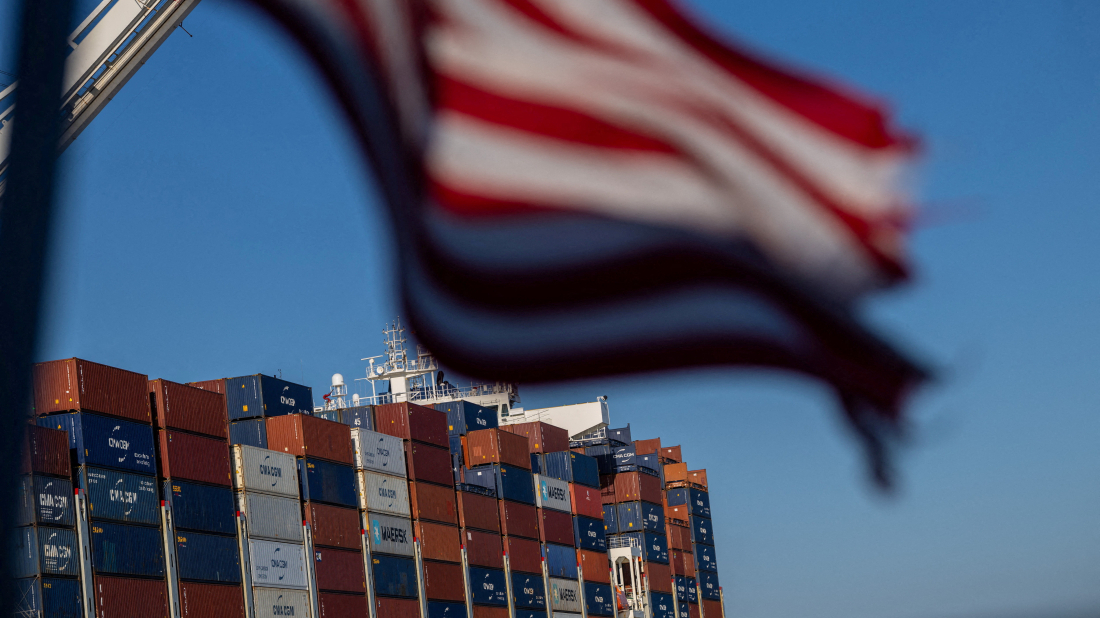Russian airstrike destroys residential area in Kharkiv, Ukraine
Russian airstrikes have devasted apartment buildings in a residential area of Kharkiv, north-eastern Ukraine, injuring at least 25 people according to...

As the U.S. tariff war continues to disrupt global trade, many countries are shifting their focus away from Washington. Instead, they are strengthening regional and intercontinental ties, building new alliances, and seeking alternative trade partnerships.
Donald Trump launched his so-called “Liberation Day” tariffs with a bold promise: 90 trade deals in 90 days. It was a show of economic strength meant to draw nations to the negotiating table.
But 120 days on, just eight deals have been made, none with much detail. And rather than lining up to make new deals with the U.S., many countries are quietly moving on.
In East Asia, major export economies are joining forces. After years of stalled talks, South Korea, China, and Japan have reopened economic dialogue, working to boost trade within the region and shield themselves from U.S. tariff fallout.
At the same time, American businesses are stepping back. A recent survey by the US-China Business Council found only 48% of U.S. firms plan to invest in China this year, down from 80% in 2024, a clear sign that confidence is slipping fast.
African countries are also adapting. Rather than waiting for Western deals, governments such as Uganda’s are pushing for greater economic self-sufficiency. And some see a bigger opportunity: to finally build strong regional trade networks within the continent, trading more with neighbours and reducing reliance on outside powers.
South America is stepping into the gap too. With U.S.-China trade strained, China is looking elsewhere for key commodities, and countries such as Brazil and Argentina, major exporters of soybeans and oil, are in prime position to benefit.
Trump did manage to strike a deal with the European Union, lowering tariffs to 15% on most EU goods. It’s a modest win, helping to stabilise relations between two major economies. But Europe isn’t stopping there. The EU is actively expanding its global trade ties, holding talks with India, Indonesia, Malaysia, Thailand, and the Philippines, in a clear effort to hedge against future volatility.
Trump’s aggressive tariff strategy hasn’t sparked the wave of deals he promised. Instead, it’s accelerated a shift, with countries across Asia, Africa, South America, and Europe all looking elsewhere for growth, security, and stability. New alliances are forming. And increasingly, the U.S. isn’t part of them.
Dozens of people are feared dead and around 100 others injured after an explosion tore through a crowded bar during New Year’s Eve celebrations at the Swiss ski resort of Crans-Montana, authorities said.
At least 47 people were killed and 112 injured after a fire broke out at a crowded bar in the Swiss ski resort town of Crans-Montana during New Year’s Eve celebrations, Italian Foreign Minister Antonio Tajani told Italian media on Thursday.
India has approved a major arms deal with Israel valued at approximately $8.7 billion, highlighting the deepening defence partnership between the two countries.
Russian athletes will not be allowed to represent their country at the Milano Cortina Winter Olympics even if a peace deal is reached with Ukraine, International Olympic Committee President Kirsty Coventry said in an interview with an Italian newspaper.
India and Pakistan on Thursday exchanged lists of nuclear facilities as well as civilian prisoners, under long-standing bilateral agreements, according to official statements from both countries.
A 6.5-magnitude earthquake has struck the southern state of Guerrero in Mexico.
Suhail Shaheen, Afghanistan’s ambassador in Doha, has again urged the United Nations to transfer Afghanistan’s seat at the UN to the Taliban-led administration, arguing the current arrangement no longer reflects realities in the country.
Russian airstrikes have devasted apartment buildings in a residential area of Kharkiv, north-eastern Ukraine, injuring at least 25 people according to the local governor.
Turkish President Recep Tayyip Erdoğan said he would have a phone call with U.S. President Donald Trump on Monday to discuss peace efforts between Ukraine and Russia as well as issues surrounding Gaza.
Russian athletes will not be allowed to represent their country at the Milano Cortina Winter Olympics even if a peace deal is reached with Ukraine, International Olympic Committee President Kirsty Coventry said in an interview with an Italian newspaper.
You can download the AnewZ application from Play Store and the App Store.

What is your opinion on this topic?
Leave the first comment